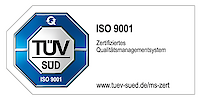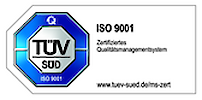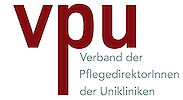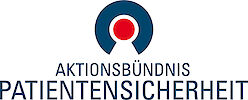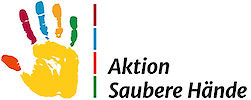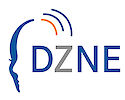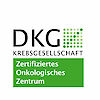Scintigraphy Unit
At the Scintigraphy Unit of the Department of Nuclear Medicine, University Hospital Bonn, various scintigraphic examinations can be performed, including bone scintigraphy, renal scintigraphy, myocardial perfusion scintigraphy, lung scintigraphy, sentinel lymph node scintigraphy and others. Please find a short overview of these examinations and how to prepare for them in the following sections.
Bone scintigraphy
A bone scintigraphy is a nuclear imaging method that is performed to diagnose and track different bone diseases. A bone scintigraphy may be necessary if you have unexplained skeletal pain, a bone infection or a bone injury that is not visible on X-ray. In addition, a bone scintigraphy can be used to detect cancer that has spread to the bone, for instance in prostate cancer or breast cancer.
How to prepare
Immediately before the test, jewelry or other metal objects may needed to be removed.
Tell your doctor if:
- you're pregnant — or think you might be pregnant — or if you're nursing
- you've taken a medicine containing bismuth, such as Pepto-Bismol, or if you've had an X-ray test using barium contrast material within the past four days.
What to expect
A small amount of a radioactive material will be injected into a vein (usually of your arm). After the injection, the radioactive substance spreads in your body and accumulates to the tissue of interest, in case of a bone scintigraphy, to your bones. Some images may be taken immediately after the injection. However, the main images are taken approximately two hours after the injection. Your doctor may recommend for you to drink several glasses of water while you wait.
During the scan, you'll be asked to lie still on a table while a gamma camera takes images of your bone. This may take up to 30 minutes, depending on the type of examination. The procedure is painless. Additionally, single-photon emission computed tomography (SPECT) may be performed of certain regions of your body (20 minutes). This method can help clarify findings seen on previously taken images. During a SPECT scan, the camera rotates around your body, taking images as it rotates.
After the scan
A bone scintigraphy usually has no side effects, and no follow-up care is necessary. However, keep in mind that your body contains a small amount of radioactive substance, so you should keep a certain distance to members of your household, especially pregnant women and children. Your doctor will provide further information during your visit.
Renal scintigraphy
A renal scintigraphy is a nuclear imaging method to examine your kidneys. Different radioactive substances can be used to examine spilt kidney function, excretion and anatomy (for instance for identification of scars). In addition, vascular changes of renal arteries can be assessed.
How to prepare
Three days prior to the examination, no other scans using intravenous contrast fluids should be scheduled. Keep in mind to drink sufficient amounts of fluids on the days of the examination. Immediately before the test, the bladder should be emptied and jewelry or other metal objects may needed to be removed. You will be informed about this before the start of the examination.
Notify your doctor if:
- you're pregnant — or think you might be pregnant — or if you're nursing
- you take ACE (Angiotensin-Converting Enzyme) inhibitors, in case you are scheduled for a captopril scintigraphy
What to expect
Prior to the start of the examination the bladder must be emptied and sufficient fluids are to be drunk (approx. 3/4 litres of water). You will be informed about this prior to the examination. A radioactive substance will be injected into a vein (usually in your arm). Recordings will be taken immediately or after waiting for a few hours, depending on your medical condition. In some cases, captopril (blood-pressure reducing medicine) may be given an hour before the start of scintigraphy, in other cases, a diuretic may be given at the end of the examination. During the scan, you'll be asked to lie still on your back while a gamma camera takes images of your kidneys. This may take 20 – 40 minute, depending on the type of examination. Please be aware that your visit may take 2 – 4 hours in total, depending on the type of the examination (4 hours in case of a DMSA scintigraphy).
After the scan
A renal scintigraphy usually has no side effects. However, you may be told to drink plenty of fluids and empty your bladder often for 1 to 2 days after the scan. This will help flush the radioactive tracer from your body. Keep in mind that your body contains a small amount of radioactive substance, so you should keep a certain distance to members of your household, especially pregnant women and children. Your doctor will provide further information during your visit.
Myocardial perfusion scintigraphy
A myocardial scintigraphy is a nuclear imaging method to identify and locate reduced blood flow to the heart muscle. In addition, it plays a role in the risk assessment of the viability of heart muscle tissue following myocardial infarction.
How to prepare
Please be aware the certain factors or conditions may interfere with the results of the test. These include, but are not limited to, the following:
- Medications containing theophylline
- Caffeine within 24 hours of the procedure
- Nitrate medications
- Medications that slow the heart rate (e.g. beta blockers)
- Pacemaker
- Pregnancy/nursing
Please notify your doctor in case one of this applies.
Plan to wear loose, comfortable clothing for the exercise portion of the test, as well as a comfortable pair of shoes. Fasting may be required before the procedure. Your doctor will give you instructions as to how long you should withhold food and/or liquids.
In case you are scheduled for a pharmacologic myocardial scintigraphy, you will need to avoid taking any medications containing theophylline (medication for asthma) or caffeine. Coffee or tea, even decaffeinated, is not allowed. Please bring a list of all medications (prescription and over-the-counter) and herbal supplements that you are taking.
What to expect
You will be asked to remove any jewelry or other objects that may interfere with the procedure. An intravenous line (IV) will be started in your hand or arm and you will be connected to an electrocardiogram (ECG) machine. A blood pressure cuff will be placed on your arm. In the first part of the procedure, you will either exercise on an ergometer or receive a medicine via your IV, that will mimic exercise. The second option will be chosen in case exercise on an ergometer is not possible (e.g. due to hip/knee problems or other medical conditions).
Then, a small amount of a radioactive substance will be injected into your veins.
After the substance could spread through your body, a set of scans will be performed. You will lie flat on a table while the images of your heart acquired.
A second set of scans will be performed much like the first set, except that you will not need to exercise or get the medicine. You will lie on the table as before while the scanner takes pictures of your heart. In some cases, your doctor may decide to have you return on another day for the second set of scans. Please be aware that your visit may take approximately 4 hours in total.
After the scan
Drink plenty of fluids and empty your bladder regularly for 24 to 48 hours after the test. This helps flush the remaining radioactive tracer from your body. Keep in mind that your body contains a small amount of radioactive substance, so you should keep a certain distance to members of your household, especially pregnant women and children. Your doctor will provide further information during your visit.
Lung scintigraphy
A lung scintigraphy is a nuclear imaging method used to help diagnose certain lung problems. In particular, lung scintigraphy is used to diagnose and locate blood clots or other small masses (emboli) in the lungs. During a lung scintigraphy a ventilation scan, a perfusion scan, or both can be performed. During the ventilation scan, you will inhale a small amount of radioactive particles to evaluate how the air moves in and out your lungs. During the perfusion examination, a small amount of radioactive substance is injected into your veins to examine the blood flow in your lungs.
How to prepare
Please notify your doctor if:
- you're pregnant — or think you might be pregnant — or if you're breastfeeding
- you have lung conditions you already know of
Generally, no prior preparation, such as fasting or sedation, is required prior to a lung scan.
What to expect
You will be asked to remove any clothing, jewelry, or other objects that may get in the way of the scan. For a perfusion scan, an IV line will be started in a hand or arm to inject the radioactive substance. Then, images of the lungs from different angles will be taken, while you are lying flat on the table. During a ventilation scan, you will breathe in a gas containing the radioactive substance through a face mask and images will be taken. In total, the examinations will take approximately 20 – 30 minutes.
After the scan
You may be told to drink plenty of fluids and empty your bladder often for 1 to 2 days after the scan. This will help flush the radioactive tracer from your body. Keep in mind that your body contains a small amount of radioactive substance, so you should keep a certain distance to members of your household, especially pregnant women and children. Your doctor will provide further information during your visit.
Sentinel lymph node scintigraphy
A sentinel lymph node scintigraphy is a nuclear imaging method used to identify and locate the sentinel lymph node (the first lymph node that drains a tumor) shortly before scheduled surgery.
How to prepare
Please notify your doctor if:
you're pregnant — or think you might be pregnant — or if you're breastfeeding
What to expect
You will be asked to remove any clothing, jewelry, or other objects that may get in the way of the scan. Depending on the type of tumor, a radioactive substance will be injected subcutaneously (into your skin). In case of breast cancer, you will receive app. four injections into the affected breast, in case of melanoma, 4 – 6 injections will be administered around the scar/the tumor site. You will then be asked to gently massage the area for a few minutes to encourage movement of the tracer into your lymph nodes. Depending on the type of tumor, images may be taken directly as well as 2 hours after injection. Please be aware that the purpose of this examination is to solely detect the sentinel lymph node, so the surgeons will know, which lymph node to remove. It is not possible to identify malignant cells within this lymph node during the scan, this will be examined after surgery.
After scanning, the sentinel lymph node will be marked on your skin using a marker pen. Do not wash these marks off your skin as they are required by your surgeon.
Appointments only after arrangement by phone
Phone.: +49 (0) 228 / 287-16171
E-Mail:
In case you have any further questions, please contact us:
Senior physicians office
Phone: +49 (0)228 287-15181



